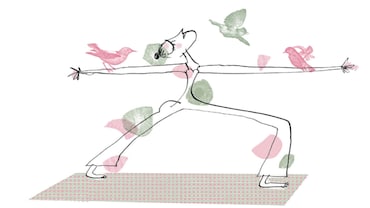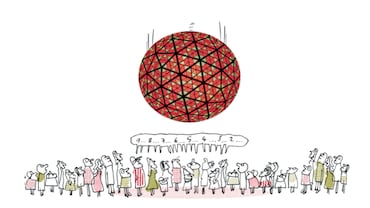- HOME
- /
- Odds and Ends
- /
- Who knew
- /
7 Facts You Didn't Know About How Blood Donation First Began
The importance of blood donation was understood by the medical world over centuries of trial and error
 Packaging blood donations, circa 1944 (Photo: National Museum of Health and Medicine, Otis Historical Archives, via Flickr)
Packaging blood donations, circa 1944 (Photo: National Museum of Health and Medicine, Otis Historical Archives, via Flickr)
If you have wondered about how to give back, or are looking for a good deed to do—donate blood; it is an easy gift, considering it does run through your veins and you could be saving lives. The ease with which blood is donated, stored and transported now—according to a 2017 study over one hundred million units of blood are donated each year, is a far cry from the early experiments and incarnations of blood transfusions and blood banks.
On World Blood Donor Day, here is a look at the history of blood donations:
1. Blood flows through human history, in its myths, its wars, so it’s no surprise that blood-work has always been part of the history of medical care and practice. Bloodletting, the practice of piercing open a vein causing blood to flow out is said to have originated in ancient Egypt: There is a tomb illustration in Memphis, Egypt, which depicts a patient being bled from the foot and neck. The practice is then recorded to have spread to Greece, where physicians like Hippocrates and Galen believed that all illnesses were caused by the overabundance of four ‘humors’ or fluids —blood, phlegm, black bile and yellow bile. The practice flourished across the world--from the Roman Empire to India and the Arab world, and spread to Europe. There it became the standard treatment recommended for several conditions such as hypertension, inflammation of the lungs, certain conditions of coma, fever and even headaches! It was only in the mid-19th century, that medical effectiveness of the practice was challenged convincingly, but the practice endured as late as 1942: A famous medical textbook continued to recommend bloodletting as an appropriate treatment for pneumonia.
2. With so much of early medical work focused on letting blood out, the history of letting blood in, or blood transfusion is murky. Some sources trace the first blood transfusion to a rather gory account. Sometime between 1490-92 Pope Innocent VIII, Giovanni Cibo, was reputedly ‘transfused’; the Pope had been rendered semi-comatose and efforts to revive him had failed. A physician named Abraham Meyre is credited to have made the Pope drink the blood of three 10-year old shepherds. Reportedly, neither of them survived the procedure. It was not until William Harvey’s breakthrough theory of blood circulation in 1628, there was a shift in how this body fluid was understood, which in turn paved the way for imagining the possibility of putting blood in the body.
3. In 1667, the first documented blood transfusion to a human was carried out by Jean-Baptiste Denis. This young French physician on the King Louis XIV’s staff performed an animal-to-human transfusion. His patient, a 15-year-old boy running a fever was transfused with a negligible amount of sheep blood. Despite the incompatibility of human blood and sheep’s blood, the boy survived. Emboldened, he carried out another transfusion on a butcher, who survived the procedure, as well. It was his third case, a mentally-ill man that he picked off the streets of Paris, who didn’t survive the transfusion and Denis found himself accused of murder, eventually led to transfusions being outlawed by the French parliament. It was only in 1818, several decades before different blood groups were discovered in 1902 that the first successful blood transfusion of human blood was carried out. James Blundell performed the procedure to treat postpartum haemorrhage.
 Jean Baptiste Denis (right) and an illustration of the human-sheep blood xenotransfusion that Denis pioneered (Illustrations via Wikimedia Commons and Twitter)
Jean Baptiste Denis (right) and an illustration of the human-sheep blood xenotransfusion that Denis pioneered (Illustrations via Wikimedia Commons and Twitter)
4. Due to the inability to store and transfer blood, transfusions continued to be performed only on a limited basis and a very small scale. It was only when World War I and its corresponding necessity for timely blood transfusions to tend to those injured, led to discoveries to help storage and transport of blood. One, clotting was inhibited by adding citrate to the donated blood. Second, glucose was added to it to allow the red blood cells to remain viable for weeks when stored in refrigerated conditions. Captain Oswald Hope Robertson of the US Army Medical Corps, was the first to bank blood. He collected Group O blood, added glucose and stored it before the Battle of Cambrai in November 1917.
5. The Soviets, who were the first to establish a network to collect and store blood to use in transfusions at hospitals —the first blood bank was established at Leningrad hospital in 1932—started with experiments on cadavers. One of the recorded instances of cadaver blood transfusions was by Moscow surgeon Sergei Yudin. He took blood from a man who had died after a bus accident and transfused it six hours later to a young engineer who had attempted suicide, on March 23, 1930. The number of such cadaver blood transfusions is unclear.
 A 1933 portrait of Sergei Yudin by Mikhail Nesterov (Photo via Wikimedia Commons)
A 1933 portrait of Sergei Yudin by Mikhail Nesterov (Photo via Wikimedia Commons)
6. Records of the first voluntary blood donation initiative in India can be traced back to 1942, during World War II. The first blood bank was established in Kolkata, West Bengal, to fill the blood needs of those injured in the battle-field. Those who volunteered were employees of the government and those of British owned industrial houses. With the end of the war, enthusiasm waned and blood bank collections were mostly from professional or paid blood donors. A decade passed by, until Mrs Leela Moolgaokar initiated voluntary blood donation drives in Bombay (now Mumbai) from 1954 onwards.
7. India suffers from a short supply in blood. According to 2015 figures, the county needs 12 million units of blood annually but collects only 9 million units. This deficit, along with the economic struggles of the population of a developing country fuels a thriving black market trade in blood, despite a 1996 Supreme Court ruling that banned paid donors and unlicensed blood banks. The judgement passed in a Public Interest Litigation, Common Cause vs Union of India and others, demanded that state, and the central government build up adequate blood banking services and undertake measures to educate and motivate people about blood donation on a voluntary basis.






